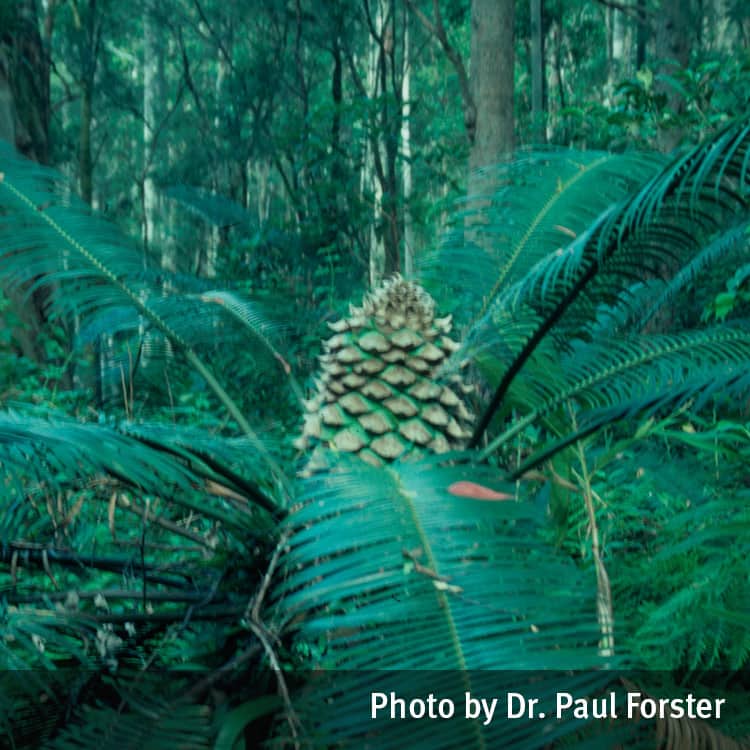Warning
Seek urgent medical attention for all ingestions.
Description
Palm-like plants generally larger than the Macrozamia species with broader, more lethery leaflets.
The leaflets are 10-35cm long and 40-60cm wide. The leaflets are attached to the upper side of the stalk or rachis, near the midline. The leaflets have parallel veins and no midrib.
Toxicity
Symptoms
If eaten, the raw fruit may cause headache and severe gastro-intestinal irritation including stomach cramps, nausea, vomiting and diarrhoea. In a very few severe cases, liver damage, coma and death have been reported. The male cone has a fruity odour when releasing pollen and this has been recorded as causing respiratory distress.
Images

Details
Common name: Pineapple zamia
Botanical name: Lepidozamia hopei
Family: Zamiaceae
General description: Palm-like plants generally larger than the Macrozamia species with broader, more leathery leaflets.
Leaves: The leaflets are 10-35cm long and 40-60cm wide. The leaflets are attached to the upper side of the stalk or rachis, near the midline. The leaflets have parallel veins and no midrib.
Fruit/Berries: The fruiting cones are similar to those of Macrozamia species but are generally larger, more conical in shape and not stalked.
Other: The seeds are red, 4-6cm long and 3-3.5cm wide.